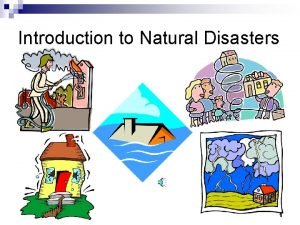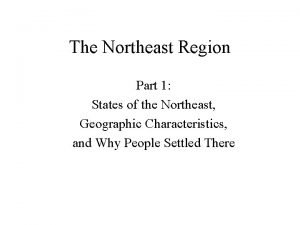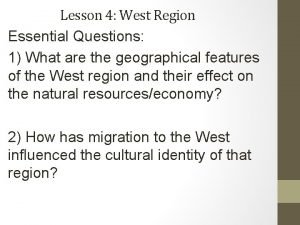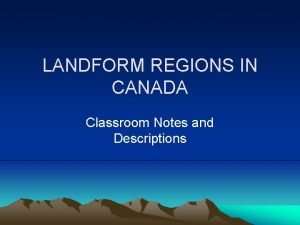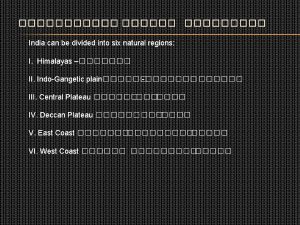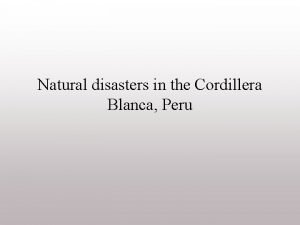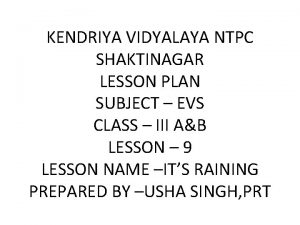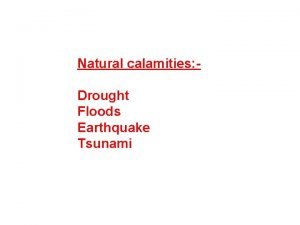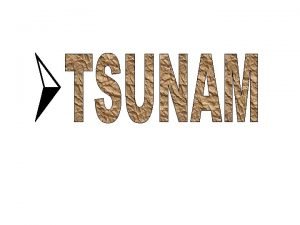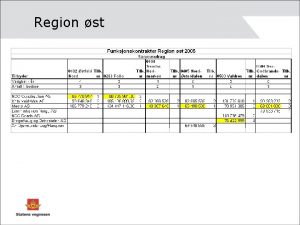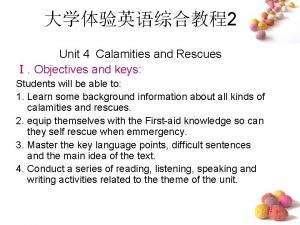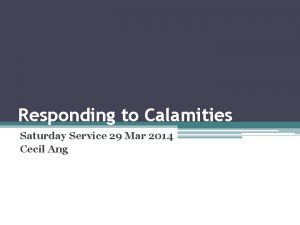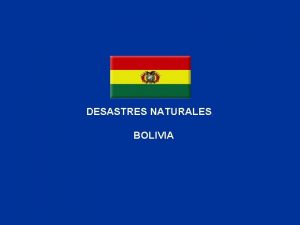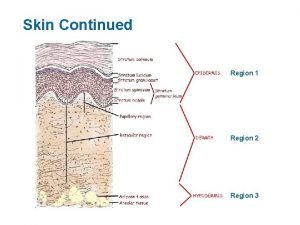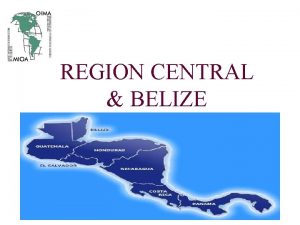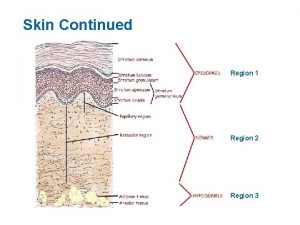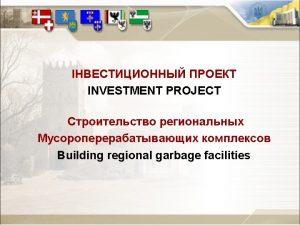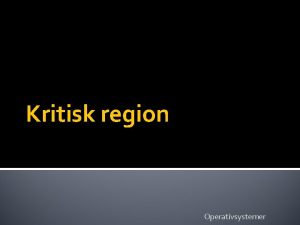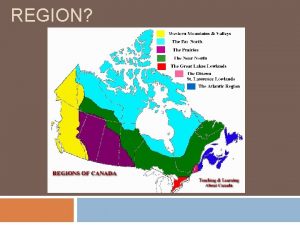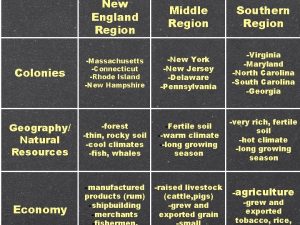LESSON 7 NATURAL CALAMITIES IN MY REGION THAT


























- Slides: 26

LESSON 7 NATURAL CALAMITIES IN MY REGION THAT I NEED TO PROPERLY PREPARE FOR

What natural calamities may endanger your province and region? ? What should you do to be safe from the damages these disasters may cause? ?

The location and topography of place play a vital role in the occurrence of natural calamities in it.

Topography is the physical appearance of the natural features of an area which include the water and landforms.

THE COUNTRY’S LOCATION AND ITS PHYSICAL FEATURES THAT MAY CAUSE CALAMITIES/DISASTERS v The Philippines is located in Southeast Asia.


THE COUNTRY’S LOCATION AND ITS PHYSICAL FEATURES THAT MAY CAUSE CALAMITIES/DISATERS The Philippines is located within the typhoon belt. v This is the reason why the country experiences 20 to 25 typhoons every year. v

THE COUNTRY’S LOCATION AND ITS PHYSICAL FEATURES THAT MAY CAUSE CALAMITIES/DISATERS Typhoons usually come from the east going to the west. v When typhoons reach the Philippine area of responsibility (PAR), they take the north-to-east direction. v

THE COUNTRY’S LOCATION AND ITS PHYSICAL FEATURES THAT MAY CAUSE CALAMITIES/DISATERS v Strong typhoons often cause storm surges in provinces near water forms, flooding in low-lying areas, and landslides in areas near mountains, hills, or plateaus.

THE COUNTRY’S LOCATION AND ITS PHYSICAL FEATURES THAT MAY CAUSE CALAMITIES/DISATERS The Philippines is also found in the Pacific Ring of Fire. v This is why we often experience earthquakes and volcanic eruptions. v

CALAMITIES EXPERIENCED IN SOME PROVINCES AND REGIONS I am Lianne from Tagbilaran City. I will not forget October 15, 2013. It was when my province, Bohol, was hit by a 7. 2 magnitude earthquake. It shook the other provinces of Region 7 as well as in regions in the Visayas.

q More than 200 people died in the calamity in Bohol in 2013. q More than 73, 000 structures were destroyed. q These include houses, buildings, and even old churches. q Despite the tragedy, Boholanos continue to strive to live again. q At present, tourism is once again active in their place. The infrastructure of the province is being rebuilt, so are the people's lives.

TYPHOON YOLANDA I am Dante from Tacloban City. On November 8, 2013, just three weeks after an earthquake hit Bohol, another tragedy was experienced in the Visayas. Typhoon Yolanda severely damaged Tacloban City of Leyte as well as the other cities in Region 8 and in the nearby regions. It was the strongest typhoon ever recorded in history.

q The super typhoon brought strong winds and heavy rains that caused storm surges. q It resulted in massive flooding that affected 1. 5 million families, damaged billions worth of properties, and killed more than 6, 000 people. q Because of the said tragedy, people learned their lesson.

q People did proper preparation when Typhoon Ruby, the strongest typhoon for the year 2014, hit the place on December 6, 2014. q The people were more prepared. q Proper coordination among local government units as well as evacuation of those who would be greatly affected was observed.

TYPHOON ONDOY I am Hector and I am from Pasig City. Our region, NCR, and the nearby regions experienced severe flooding. This took place on September 26, 2009, due to nonstop rainfall brought about by Typhoon Ondoy. It affected 5 million people and resulted in the deaths of more than 300 people.

q After this tragedy, families became more responsible. q They became more diligent in disposing of their garbage properly. q The government had rivers, canals, and other drainages cleaned. q Drainage systems in the city were also improved.

PROMPT AND PROPER ACTIONS IN RESPONSSE TO TRAGEDIES EXPERIENCED IN THE REGION

Here are things you should do in case of calamities. v Monitor the condition of water forms in your community. Find out about the latest condition of the water forms in your community during typhoons or heavy rains. Listen to the radio, watch television, Surf the internet, or coordinate with the barangay officials to know possible flooding in your area. This will help you determine if you need to evacuate to a safer place.

Here are things you should do in case of calamities. v Listen to and follow the warnings of your town or barangay officials. Barangay officials warn the community members especially during times of calamities such as typhoons. To be safe, people must follow what the authorities say.

Here are things you should do in case of calamities. v Listen to and follow the warnings of your town or barangay officials. For example, in Marikina, the following calamity warnings are implemented: o Alarm Level 1 -15 meter reference at sea level: WARNING o Alarm Level 2 -16 meter reference at sea level: PREPARE o Alarm Level 3 -17 meter reference at sea level: EVACUATE

Here are things you should do in case of calamities. v Follow government warnings and orders. Sometimes the government cancels flights or sea voyage to ensure the safety of passengers. v Be observant of your surroundings when there are calamities, especially if your place is near mountains. Landslides may occur.

Here are things you should do in case of calamities. v Evacuate during volcanic eruptions. Experts know the signs of an impending volcanic eruption. When they say you have to evacuate you must do as they say. v Have a safe floor plan for your house. Experts advise that your house must be built in a way that it would be safe from flood during typhoons and heavy rains. If possible, make it a two-storey or a three-storey house for your safety.

Here are things you should do in case of calamities. v Know the unsafe areas in your community. Know which places are dangerous to go to during calamities. For example, seashores are not safe during typhoons because of possible storm surges

v v Natural calamities are part of the location and topography of our country. We may not be able to prevent these, but we could prepare to save lives.

THE END!
 Explanation of natural disaster
Explanation of natural disaster Natural calamities essay
Natural calamities essay Phân độ lown
Phân độ lown Block xoang nhĩ độ 2 type 1
Block xoang nhĩ độ 2 type 1 Thể thơ truyền thống
Thể thơ truyền thống Thơ thất ngôn tứ tuyệt đường luật
Thơ thất ngôn tứ tuyệt đường luật Chiến lược kinh doanh quốc tế của walmart
Chiến lược kinh doanh quốc tế của walmart Tìm độ lớn thật của tam giác abc
Tìm độ lớn thật của tam giác abc Con hãy đưa tay khi thấy người vấp ngã
Con hãy đưa tay khi thấy người vấp ngã Tôn thất thuyết là ai
Tôn thất thuyết là ai Gây tê cơ vuông thắt lưng
Gây tê cơ vuông thắt lưng Sau thất bại ở hồ điển triệt
Sau thất bại ở hồ điển triệt Muscles of scapula region
Muscles of scapula region Active region and saturation region
Active region and saturation region Resources of the northeast region
Resources of the northeast region West region products
West region products Natural resources in the cordillera region
Natural resources in the cordillera region What are the natural regions of india
What are the natural regions of india Vegetation regions canada
Vegetation regions canada Cordillera natural disasters
Cordillera natural disasters Natural hazards vs natural disasters
Natural hazards vs natural disasters Natural capital and natural income
Natural capital and natural income Lesson plan kvs bangalore region
Lesson plan kvs bangalore region Kendriya vidyalaya annual pedagogical plan
Kendriya vidyalaya annual pedagogical plan Natural science grade 7 term 3 practical tasks
Natural science grade 7 term 3 practical tasks Natural environment teaching lesson plans
Natural environment teaching lesson plans Natural science grade 6 term 4
Natural science grade 6 term 4

